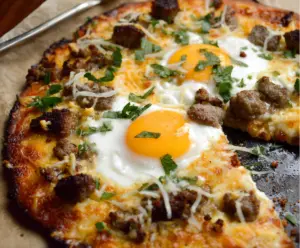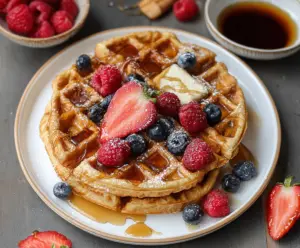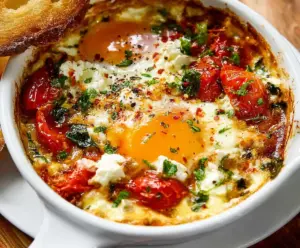Sheet pan lemon garlic butter salmon is a simple and delicious meal that comes together on just one pan. The salmon is tender and flaky, topped with a bright lemon garlic butter sauce that adds so much flavor without any fuss. Roasting everything together helps all the flavors meld perfectly, and cleanup is a breeze.
I love making this for busy weeknights when I want something tasty but don’t want to spend a lot of time in the kitchen. The lemon adds a fresh zing, and the garlic butter makes every bite feel rich and special. I usually toss some veggies right on the pan too, so dinner is complete without extra work.
One of my favorite parts is how easy it is to customize. You can add your go-to herbs or swap out the butter for olive oil if you want a lighter option. This is the kind of meal I always feel good about serving, whether it’s just for me or when friends drop by unexpectedly.
Bake, Serve, Wear the Vibe 👕
Editor-picked tees our Oven To Fork readers love.



We may earn from qualifying purchases at no extra cost to you.
Key Ingredients & Substitutions
Salmon: Fresh salmon fillets give the best flavor and texture. You can use frozen, but thaw completely first. If you prefer, try other firm fish like cod or trout.
Butter & Garlic: Butter creates a rich, silky sauce, while garlic adds aroma and depth. For a lighter dish, swap butter for olive oil, but garlic is a must for flavor.
Lemon: Lemon juice and slices brighten the whole dish with fresh citrus notes. If you don’t have fresh lemons, a splash of bottled lemon juice works in a pinch, but fresh is best.
Parsley: Adds a mild herbal touch. Parsley is versatile, so if you want, try dill, thyme, or basil for a twist.
Optional Broth or Wine: Adds moisture and a subtle flavor layer. If you skip this, the butter sauce still shines wonderfully.
How Do I Get Perfectly Cooked, Juicy Salmon Every Time?
Cooking salmon can be tricky—it dries out quickly if overcooked. Here’s what helps:
- Preheat your oven to 400°F (200°C) so the salmon cooks evenly and fast.
- Line your pan with foil for easy cleanup and prevent sticking.
- Brush the salmon well with lemon garlic butter to keep it moist and add flavor.
- Roast for about 12-15 minutes depending on thickness—look for salmon that flakes easily but still looks moist inside.
- If you want a crisp, golden top, switch to broil for the last 2 minutes, but watch carefully to avoid burning.
- Let the salmon rest a minute before serving. Spoon some pan juices on top to make it extra juicy.
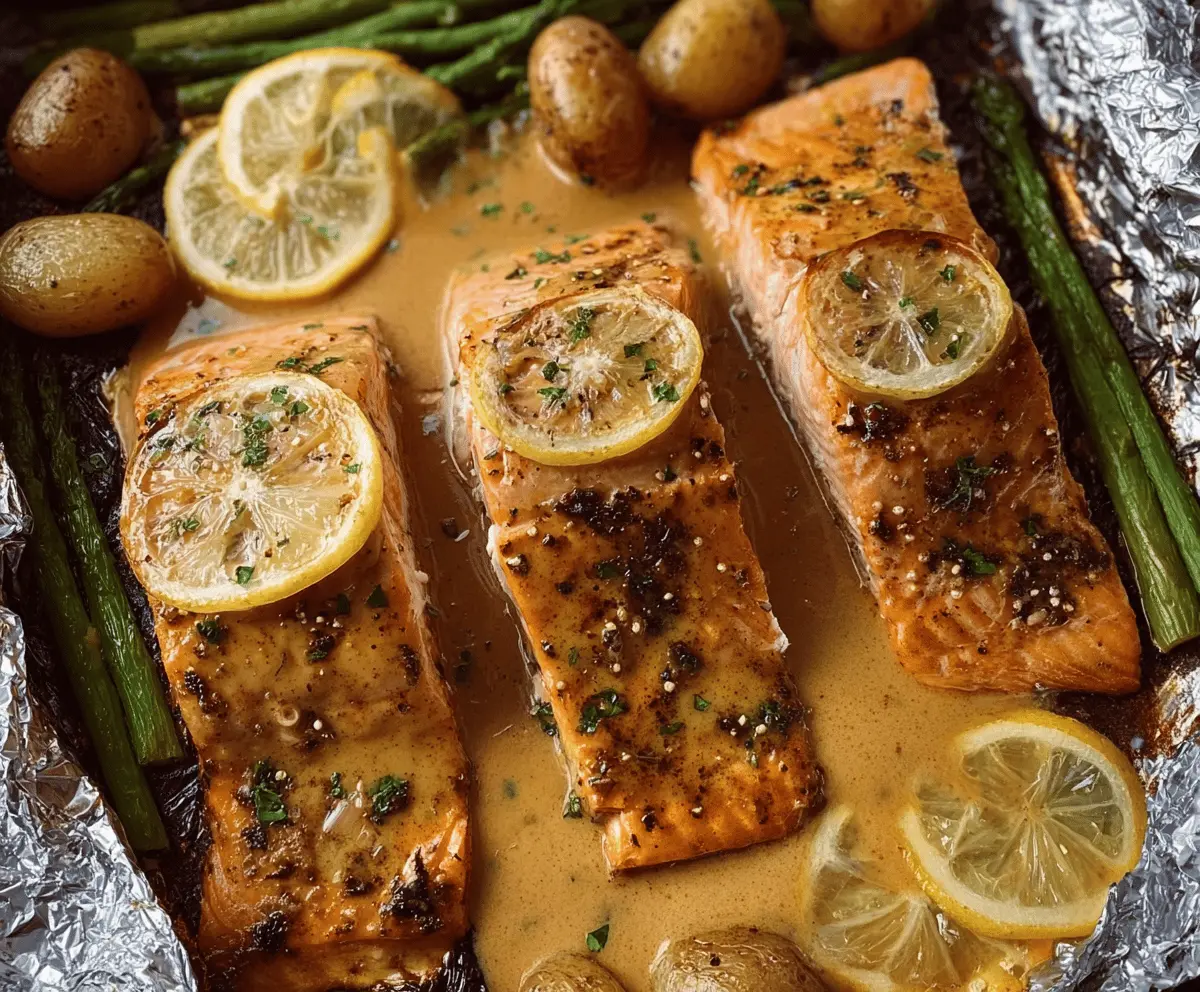
Equipment You’ll Need
- Sheet pan – Perfect for cooking salmon and veggies together and easy to clean up.
- Aluminum foil – Keeps the pan clean and helps with easy removal of cooked fish.
- Small bowl – Great for mixing the lemon garlic butter sauce smoothly.
- Basting brush or spoon – Helps you spread the butter mixture evenly over the salmon.
- Sharp knife – For slicing lemons and trimming vegetables cleanly.
Flavor Variations & Add-Ins
- Swap salmon for trout or cod for a milder fish option that still roasts well.
- Add fresh dill or thyme instead of parsley for a different herbal note that pairs nicely with lemon.
- Toss in cherry tomatoes or thinly sliced bell peppers to add sweetness and color to the pan.
- Sprinkle red pepper flakes for a light spicy kick if you like some heat.
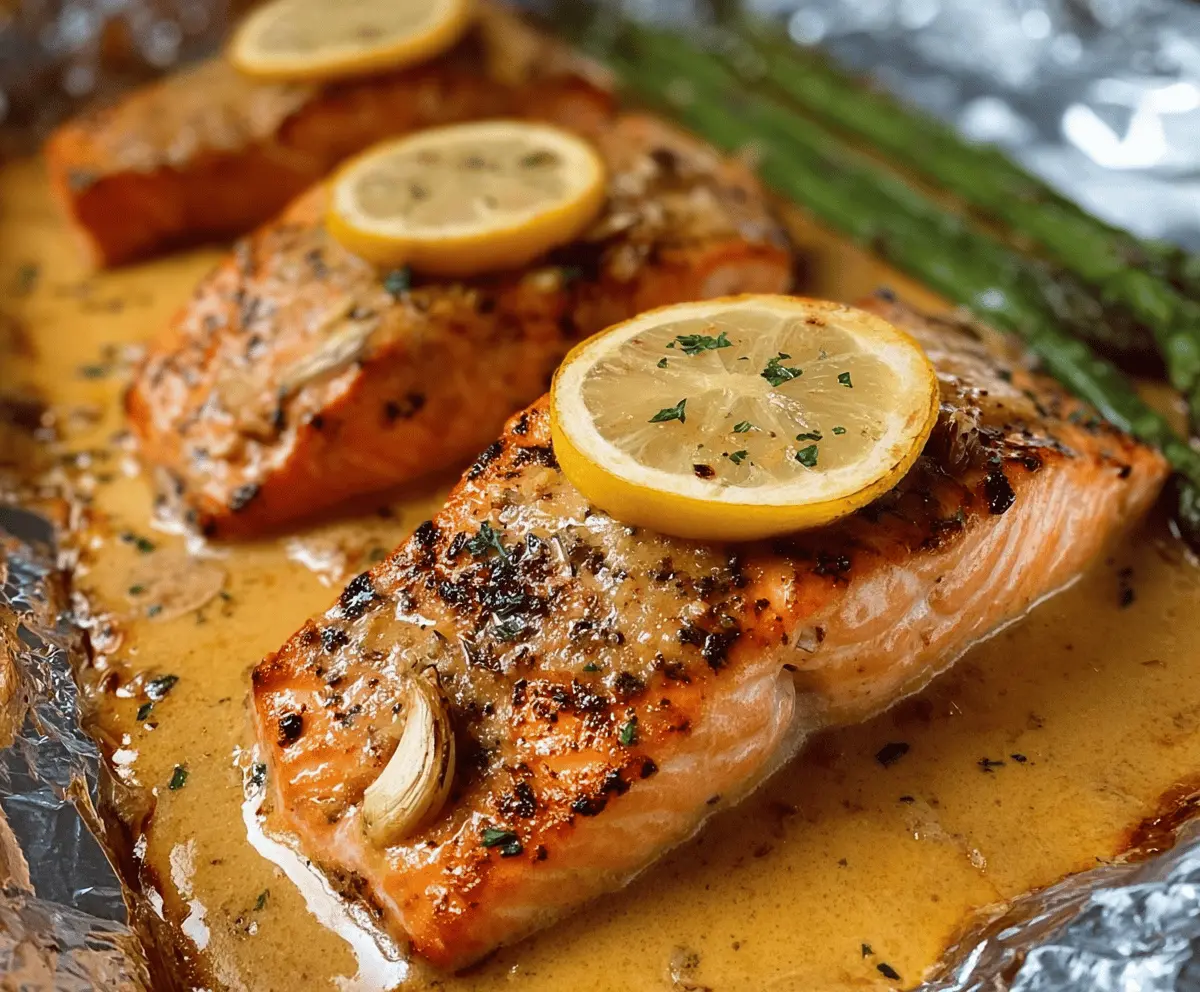
How to Make Sheet Pan Lemon Garlic Butter Salmon?
Ingredients You’ll Need:
For The Salmon:
- 4 salmon fillets (about 6 oz each)
- 3 tablespoons unsalted butter, melted
- 3 garlic cloves, minced
- 1 lemon, thinly sliced, plus 2 tablespoons lemon juice
- 1 teaspoon dried parsley (or 1 tablespoon fresh, chopped)
- Salt and freshly ground black pepper, to taste
- 1/2 teaspoon paprika (optional, for color and mild flavor)
- 1/4 cup chicken broth or white wine (optional, adds extra moisture and flavor)
Optional Vegetables:
- Asparagus or other vegetables for roasting
How Much Time Will You Need?
This dish takes about 10 minutes to prepare and about 15 minutes to cook, so you can have a fresh, flavorful meal ready in under 30 minutes total. It’s perfect for a fast and easy weeknight dinner without a lot of fuss.
Step-by-Step Instructions:
1. Get Your Oven Ready:
Preheat your oven to 400°F (200°C). Line a sheet pan with aluminum foil to make cleaning up easy later.
2. Make the Lemon Garlic Butter Sauce:
In a small bowl, mix together the melted butter, minced garlic, lemon juice, parsley, paprika if you’re using it, and some salt and pepper. Whisk everything until well combined.
3. Prepare the Salmon and Veggies:
Place the salmon fillets skin-side down on the lined sheet pan. If you want to add veggies like asparagus, arrange them around the salmon. Then, brush the lemon garlic butter mixture all over the salmon and the vegetables.
4. Add Lemon Slices and Optional Liquid:
Put a slice of lemon on top of each salmon fillet. If you’d like, pour the chicken broth or white wine around the pan to keep everything moist as it cooks.
5. Roast the Salmon:
Put the pan in the oven and roast for 12 to 15 minutes. The salmon is done when it flakes easily with a fork and looks cooked through.
6. Optional Broil for a Golden Finish:
If you like a slightly crispy top, switch your oven to broil for the last 2 minutes. Watch closely so it doesn’t burn.
7. Serve and Enjoy:
Remove the pan from the oven, spoon some of the tasty pan juices over your salmon pieces, and serve immediately with your roasted vegetables or favorite side dishes. Enjoy your easy, delicious meal!
Can I Use Frozen Salmon for This Recipe?
Yes, you can! Just make sure to thaw the salmon completely in the refrigerator overnight before cooking. This helps it cook evenly and keeps the texture tender.
How Should I Store Leftovers?
Store any leftover salmon and vegetables in an airtight container in the fridge for up to 3 days. Reheat gently in the oven or microwave to keep the salmon moist.
Can I Substitute Butter with Olive Oil?
Absolutely! Olive oil makes a lighter version of the sauce but still adds nice flavor. Just swap the melted butter 1:1 with olive oil and proceed as usual.
What Vegetables Work Best for Roasting Alongside Salmon?
Asparagus, cherry tomatoes, zucchini, bell peppers, and green beans all roast well and pair nicely with the lemon garlic butter salmon. Cut veggies into similar-sized pieces for even cooking.
